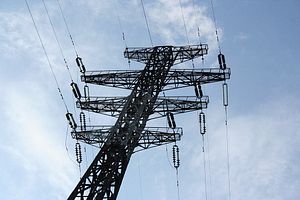While the world awaits confirmation of the death of Uzbekistani President Islam Karimov, questions about his potential replacement, regional fallout, and political shifts already abound. However, there’s another aspect of post-Karimov Tashkent that bears monitoring: how the president’s successor will view regional, and internationalized, infrastructure projects. Namely, will the new leadership rising in Tashkent prove more amenable to the infrastructure projects lacing Central Asia — or, like Karimov, hang the threat of war over certain projects’ completion?
Look, for instance, at the current state of affairs surrounding the Central Asia-South Asia Electricity Transmission and Trade (CASA-1000) undertaking. The project — which will theoretically transit electricity from Kyrgyzstan and Tajikistan to customers in Afghanistan and Pakistan — has seen a recent influx of interest, but the likelihood of completion, as currently planned, remains low. While Uzbekistan is not directly involved in the project’s construction, Tajikistan’s president, Emomali Rahmon, has noted that CASA-1000 “is not profitable” without the inclusion of the proposed Rogun Dam — a project that Uzbekistani officials, noting Rogun’s potential effects on Tashkent’s hydro resources, have unequivocally condemned. Karimov, a few years ago, even hinted that such divisions of water allocation could result in “wars.”
More concerning, two of Karimov’s potential replacements — Prime Minister Shavkat Mirziyoyev and Finance Minister Rustam Azimov — have echoed Karimov in denouncing Rogun. (Thankfully, they haven’t yet resorted to physical altercations with Rahmon, like Karimov has been known to do.) Dushanbe remains well aware of Tashkent’s outspoken opposition to Rogun, and the likelihood that the sources of this discontent may well be replacing Karimov. As I wrote in July:
On July 19, [Mirziyoyev] passed a letter along to Tajikistan’s prime minister, Kokhir Rasulzoda. In it, Mirziyoyev writes that the World Bank believes Rogun could bring “large-scale threats to the entire region.” The prime minister added that the project is but a leftover of “Soviet megalomania,” with Dushanbe causing “anxiety” with the “risky steps” taken toward Rogun’s construction.
… While the language mirrors much of what was seen in Tashkent’s 2013 letter to the World Bank–which described Rogun as a project that could “result in irreversible social and environmental consequences” for the region–Mirziyoyev’s text contains none of the vitriol we saw in a 2014 response from [Azimov]. After the World Bank, as Jamestown summarized, “explicitly approved” of Tajikistan’s schematics, Azimov didn’t hold back, castigating the World Bank’s assessment as both “unacceptable” and “complete nonsense.” Last year, Uzbekistan’s Ministry of Foreign Affairs then reissued Azimov’s thoughts wholesale, giving Dushanbe (and us) another chance to read through his claims about the World Bank’s “shallow and unprofessional approach[.]”
Another area of discontent lies in the current status of the Line D pipeline within China’s Central Asia gas network. The pipeline — China’s single largest investment in Tajikistan — ran into issues earlier this year, when both Uzbekistan and Kyrgyzstan announced pauses to the gas line’s construction. Line D hasn’t provided near the tensions Rogun and CASA-1000 have brought, but the break in construction risks a steady, and significant, source of revenue for Tashkent’s economy, already struggling under the weight of declining remittances. Karimov’s replacement may not be able to do much to coax the line to completion, but the current stasis doesn’t bode especially well for regional cooperation efforts.
We won’t, of course, yet know how Karimov’s replacement treats these (and other) infrastructure projects, and how that treatment will affect regional relations. There’s a possibility, however slim, that the new leadership structure in Tashkent takes some kind of consultative eye to projects like Rogun and CASA-1000 — the latter of which Uzbekistan may even be able to join. The likelier scenario, unfortunately, would be a continuation — or expansion — of Uzbekistani opposition to these projects. It would be easy for Karimov’s successor regime to wrap opposition to these projects within a potential appeal to nationalism — an appeal that the new regime may put forth in a search for domestic legitimacy.
In better days, Karimov warned of potential war over regional resources, and regional infrastructure projects. It seems that he didn’t live to see his threat to completion, but that threat, regardless of Karimov’s presence, remains.

































